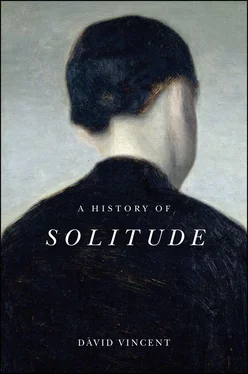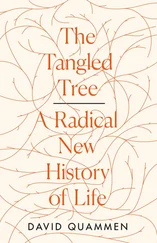4 4. ‘Zimmerman on Solitude’, The Critical Review, 3 (1791): 14.
5 5. The first English versions were based on an edited translation of a French translation made by J. B. Mercier, which omitted eight chapters critical of solitude. These were included in a fuller version published in 1798 which is used here. See ‘Advertisement’, in Johann Zimmerman, Solitude Considered with Respect to its Dangerous Influence Upon the Mind and Heart (London: C. Dilly, 1798); Frederick H. Wilkens, Early Influence of German Literature in America (Reprint No. 1, Americana Germanica, III, 2, London: Macmillan, 1900), 49–50; Anne Vila, ‘Solitary Identities: Perspectives on the “Contemplative” Life from 18th-Century Literature, Medicine, and Religion (France, Switzerland)’, presented 18 July 2019 at the congress of the International Society for Eighteenth-Century Studies in Edinburgh. I am grateful to Anne Vila for advice on the different editions.
6 6. Zimmerman, Solitude, 316.
7 7. Zimmerman, Solitude, 88.
8 8. Wolf Lepenies, Melancholy and Society, trans. Jeremy Gaines and Doris Jones (Cambridge, MA: Harvard University Press, 1992), 62.
9 9. See Francis Petrarch, The Life of Solitude, trans. Jacob Zeitlin ([Urbana]: University of Illinois Press, 1924). Encouraged by the success of Zimmermann’s Solitude, one of his English publishers, Vernor and Hood, issued a new translation of the life of Petrarch in 1797. Advertisement in The Times, 7 April 1797: 2.
10 10. Samuel-Auguste Tissot, The Life of Zimmerman (London: Vernor and Hood, 1797), 3–10.
11 11. Zimmerman, Solitude, 66.
12 12. Rousseau, ‘Science, Culture and the Imagination’, 768.
13 13. Zimmerman, Solitude, 75.
14 14. Zimmerman, Solitude, 2.
15 15. Lawrence E. Klein, ‘Sociability, Solitude, and Enthusiasm’, in Enthusiasm and Enlightenment in Europe, 1650–1850, ed. Lawrence E. Klein and Anthony J. La Vopa (San Marino, CA: Huntingdon Library, 1998), 155–6.
16 16. Johann Zimmerman, Aphorisms on Men, Morals and Things: Translated from the Mss Of J. G. Zimmerman (London: Vernor and Hood, 1800), 40–1.
17 17. Denis Diderot, Encyclopédie (1765), vol. XV, 324. See also Robert Sayre, Solitude in Society: A Sociological Study in French Literature (Cambridge MA: Harvard University Press, 1978), 49.
18 18. Cited in Lepenies, Melancholy and Society, 65.
19 19. Petrarch, Life of Solitude, 125
20 20. Michel de Montaigne, The Complete Essays, trans. and ed. M. A. Screech (London: Penguin, 2013), 269.
21 21. On the context of his essay see Brian Vickers, ed., Public and Private Life in the Seventeenth Century: The Mackenzie–Evelyn Debate (Delmar, NY: Scholars’ Facsimiles & Reprints, 1986), x–xxxiv.
22 22. John Evelyn, Publick Employment and an Active Life Prefer’d to Solitude … In Reply to a late Ingenious Essay of a contrary Title (London: H. Herringman, 1667), 69.
23 23. Evelyn, Publick Employment, 77.
24 24. Evelyn, Publick Employment, 118.
25 25. Zimmerman, Solitude, 21.
26 26. Robert Burton (‘Democritus Junior’), The Anatomy of Melancholy (Oxford: Henry Cripps, 1621), 116.
27 27. Zimmerman, Solitude, 3.
28 28. The Gentleman’s Magazine, LXI, 2 (1791): 1215.
29 29. On the development of the autobiographical form, see, Michael Mascuch, Origins of the Individualist Self: Autobiography and Self-Identity in England, 1591–1791 (Cambridge: Polity, 1997), 7–23.
30 30. Jean-Jacques Rousseau, Reveries of the Solitary Walker, trans. Russell Goulbourne (1782; Oxford: Oxford University Press, 2011), 7.
31 31. Zimmerman, Solitude, 165–6.
32 32. Zimmerman, Solitude, 164.
33 33. Sarah Bakewell, How to Live: Or A Life of Montaigne in One Question and Twenty Attempts at an Answer (London: Chatto & Windus, 2010), 162.
34 34. Tissot, Life of Zimmerman, 37. On the friendship of Tissot and Zimmermann, see Antoinette Emch-Dériaz, Tissot: Physician of the Enlightenment (New York: Peter Lang, 1992), 28.
35 35. Zimmerman, Solitude, 15.
36 36. Tissot, Life of Zimmerman, 91.
37 37. Zimmerman, Solitude, 3.
38 38. Zimmerman, Solitude, 19
39 39. Jean-Étienne Dominique Esquirol, Mental Maladies: A Treatise on Insanity, trans. E. K. Hunt (Philadelphia: Lea and Blanchard, 1845), 199.
40 40. Matthew Bell, Melancholia: The Western Malady (Cambridge: Cambridge University Press, 2014), 54; Stanley W. Jackson, Melancholia and Depression: From Hippocratic Times to Modern Times (New Haven: Yale University Press, 1986), 4–17; Esquirol, Mental Maladies, 199.
41 41. Edward Shorter, From Paralysis to Fatigue: A History of Psychosomatic Illness in the Modern Era (New York: Free Press, 1992), 15–16; Rousseau, ‘Science, Culture and the Imagination’, 779–80.
42 42. Lepenies, Melancholy and Society, 65.
43 43. Burton, Anatomy of Melancholy, 119.
44 44. Thomas Trotter, A View of the Nervous Temperament (London: Longman, Hurst, Rees, Orme & Brown, 1812), xiv.
45 45. Zimmerman, Solitude, 156–7.
46 46. William Buchan, Domestic Medicine; or, The Family Physician (1769; Edinburgh: no pub., 1802), 230.
47 47. Philippe Pinel, A Treatise on Insanity, trans. D. D. Davies (1801; London: Cadell and Davies, 1806), 136. Also Alexander Crichton, An Inquiry into the Nature and Origin of Mental Derangement, 2 vols (London: T. Cadell, Junior, and W. Davies, 1798), vol. 2, 229.
48 48. Philip Koch, Solitude: A Philosophical Encounter (Chicago: Open Court, 1994), 212.
49 49. Cited in Roy Porter and Dorothy Porter, In Sickness and in Health: The British Experience 1650–1850 (London: Fourth Estate, 1988), 208.
50 50. Zimmerman, Solitude, 60.
51 51. John D. Barbour, ‘A View from Religious Studies: Solitude and Spirituality’, in The Handbook of Solitude: Psychological Perspectives on Social Isolation, Social Withdrawal, and Being Alone, ed. Robert J. Coplan and Julie C. Bowker (Chichester: Wiley Blackwell, 2014), 559–60.
52 52. Zimmerman, Solitude, 109.
53 53. Klein, ‘Sociability, Solitude, and Enthusiasm’, 164–7.
54 54. Zimmerman, Solitude, 30–1.
55 55. Cited in Michael Hill, The Religious Order (London: Heinemann Educational, 1973), 51.
56 56. Evelyn, Publick Employment, 5–6.
57 57. John Haslam, Observations on Madness and Melancholy (London: J. Callow, 1809), 263. See also Pinel, Treatise on Insanity, 142.
58 58. Haslam, Observations on Madness, 265.
59 59. Richard von Krafft-Ebing, Text-Book of Insanity, trans. Charles Gilbert Chaddock (Philadelphia: F. A. Davis, 1904), 302.
60 60. Zimmerman, Solitude, 158.
61 61. Gordon Campbell, The Hermit in the Garden (Oxford: Oxford University Press, 2013), 96–144; Edward S. Harwood, ‘Luxurious Hermits: Asceticism, Luxury and Retirement in the Eighteenth-Century English Garden’, Studies in the History of Gardens & Designed Landscapes, 20, 4 (2000): 274–8. On the hiring of a hermit to occupy the cave complex created on the Hawkstone Estate in 1783, see Robert Macfarlane, Mountains of the Mind (London: Granta Books, 2003), 151.
62 62. Rev. Joseph Milner, The History of the Church of Christ, 3 vols (1794–1809; new edn, London: Longman, Brown, Green & Longmans, 1847), vol. 1, 554–5.
63 63. Louis F. Peck, A Life of Matthew G. Lewis (Cambridge, MA: Harvard University Press, 1961), 11–13; Joseph James Irwin, M. G. ‘Monk’ Lewis (Boston: Twayne, 1976), 35–59.
64 64. On the writing of The Monk and its German sources, see Matthew G. Lewis, The Life and Correspondence of M. G. Lewis, 2 vols (London: Henry Colburn, 1839), vol. 1, 73; André Parreaux, The Publication of The Monk: A Literary Event 1796–1798 (Paris: Libraire Marcel Didier, 1960), 26–31; Syndy Conger, Matthew G. Lewis, Charles Robert Maturin and the Germans (Salzburg: Institut für Englische Sprache und Literatur, 1977), 12–159; D. L. Macdonald, Monk Lewis: A Critical Biography (Toronto: University of Toronto Press, 2000), 76–80, 91–127.
Читать дальше












